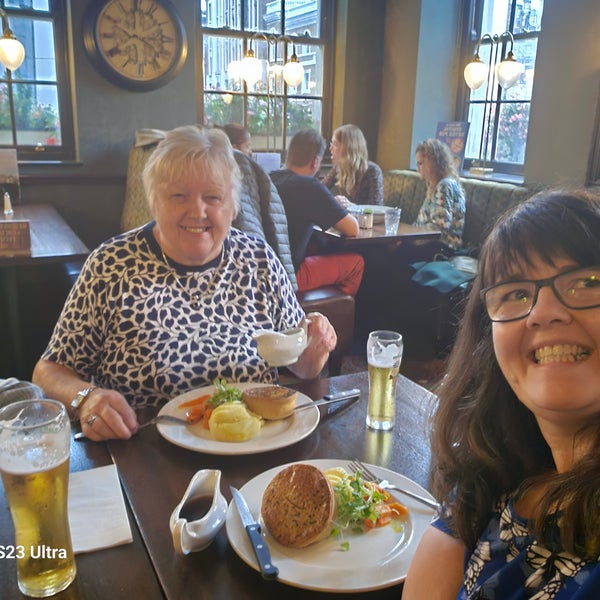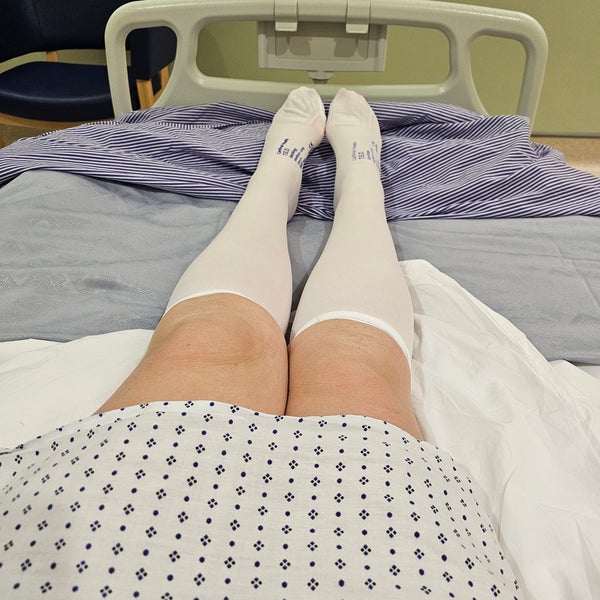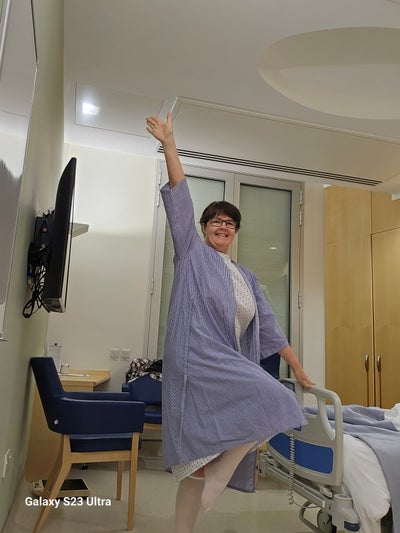
I felt supported all the way
“They told me it was a wee girl, about the same age as our son, I was donating for. I thought about how she must have been fighting for her life. If it had been our son, we’d have wanted someone to help. It’s good to remember that. So, if I can help somebody needing a transplant, I will.”
Donating stem cells
The vast majority of stem cell donations are made through a procedure similar to giving blood. However, in approximately 10 percent of cases, due to the needs of the recipient, a donor’s bone marrow is extracted under general anaesthetic via a simple needle in their hip bone. Carol Severn, a Scottish mother of two who lives in Manchester, recently donated in this way. She wants to help DKMS demystify the process.
“It all began years ago, with a leaflet through our door,” remembers Carol, a maths teacher in a secondary school. "I thought about the cancer that runs in my family, my mum and my gran both had it. So, I signed up with DKMS. I remember the mouth swab kit being super-easy, and then I just sat quietly on their register. Until one day I got a letter saying I might be a match for someone.
Chosen as best match
“DKMS asked if I would do a blood test locally. It was all super-easy. When I got a call to say I was the best match, I felt really excited.
“DKMS explained the whole process, and that the doctors would prefer to collect my stem cells by bone marrow from my hip rather than via blood from my arm. They said I’d need to be under general anaesthetic, but I’d undergone that before without any problems.
“More tests were needed to confirm I was a suitable match. It was like worrying about failing an exam, I really wanted to pass!


“Once we had full confirmation, DKMS worked with me to pin down a donation date. They explained I’d need around 10 days off work: my HR manager was very understanding and I got special leave.
“DKMS asked if I’d like anyone to come with me. My husband wasn’t keen on me going alone, so my Auntie Beryl, who’s retired and lives nearby, said she’d come. DKMS arranged for her to stay in a hotel near the hospital.
Guided through the process

“We caught the 7am train to the clinic in London. After I’d checked in, the doctor explained things again and some of the side effects I might have, like low iron levels, low blood pressure or feeling off-colour afterwards. We had more explanations from different people. Everyone was lovely and made sure we were absolutely clear and happy about the procedure. I felt supported all the way.
“They said we could go out that evening as long as we were 'home' by midnight, and if I didn’t have anything to eat or drink after that. We went to the musical Hamilton and had a great time!
“The next morning the nurses woke me, and I got into my surgical gown and fancy socks. That’s when they told me my recipient would be a child. It all became very real: I was so glad I was helping.
“I was on a bed in the operating theatre whilst they put the cannulas in. Then they got me listening to some music…and the next thing I knew, I was in the recovery room. The nurse checked I was OK, then I texted Auntie Beryl to say I’d be napping for the morning but she could come after lunch.
After my procedure
“My haemoglobin levels were a bit low, I do have low blood pressure generally, so they made me stay in bed a bit longer than expected. But soon I was discharged, with paracetamol to take. I didn’t really have any pain, and there was minimal bruising on my back from the tiny incision holes; typically they heal very quickly. I just felt tired for a few days. I’m on my feet a lot at work, so in the end, I was glad to have the full 10 days off.
“I’d definitely like to be in touch with the family of the little girl who had my stem cells. I feel attached to her in a very special way. DKMS has given me an anonymised card to write to them, and they will let me know at regular intervals how she is doing. Depending on which countries a donor and their recipient are based in, direct contact is usually possible two years after a stem cell transplant.
“Please join the DKMS stem cell register – it’s so easy, and you never know when you might be a match, or whether you might need a match!”



